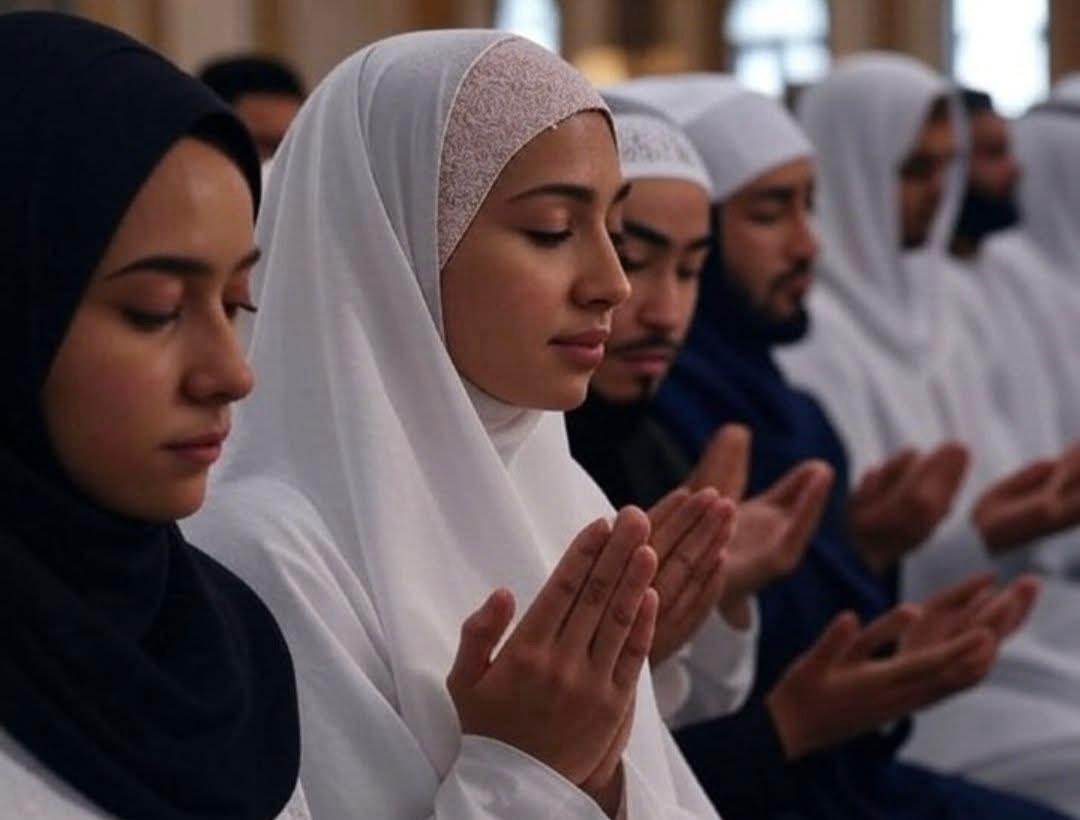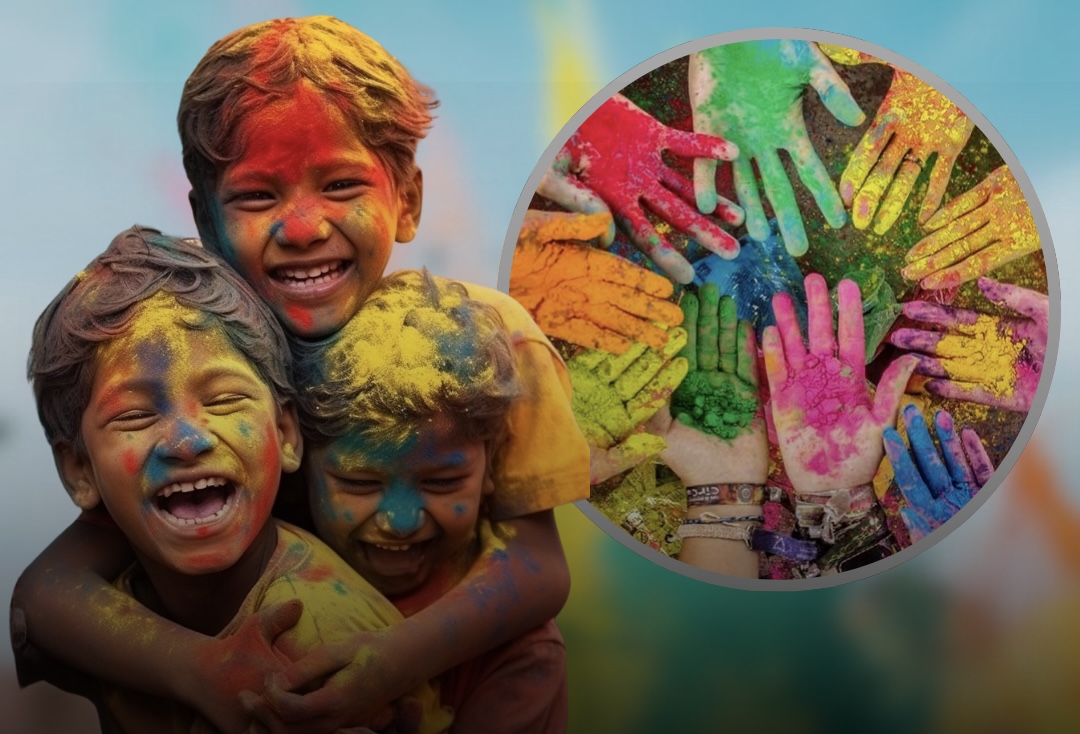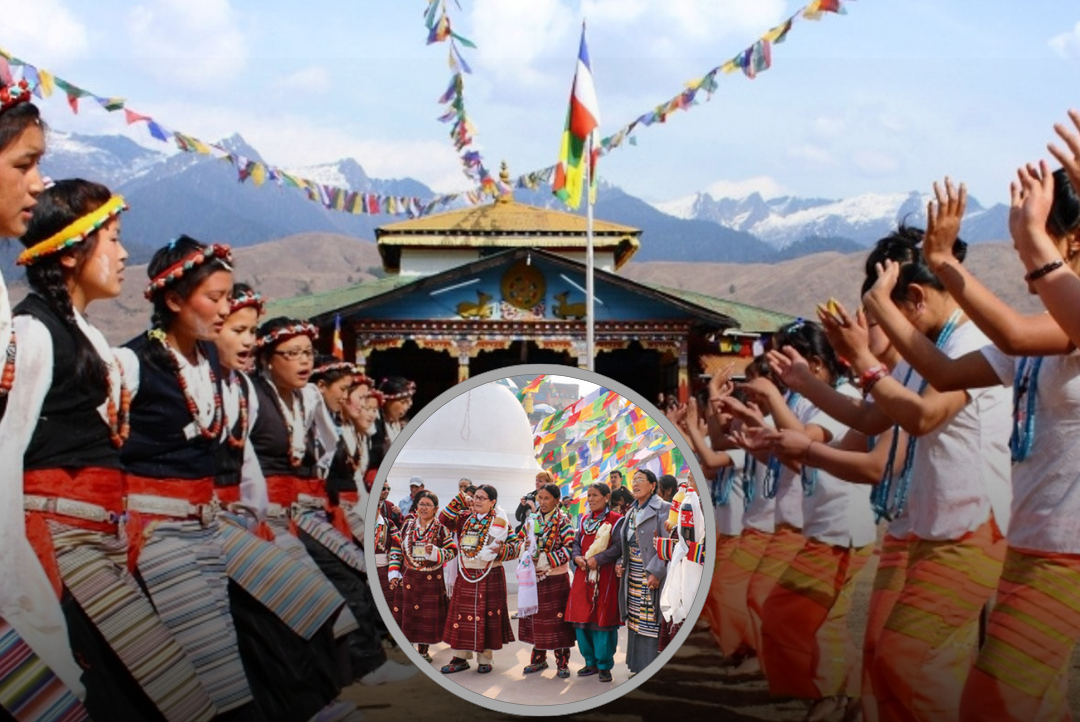Religion

Heartfelt Greetings on Bakra Eid
Bakra Eid – A Festival of Faith and Kindness Warm wishes and heartfelt greetings to all the followers of Islam on the holy festival of Bakra Eid! ❤️ This special occasion, also known as Eid al-Adha, is one of the most sacred and meaningful festivals for Muslims around the world, including here in Nepal. It is a time of devotion, sacrifice, and deep spiritual connection with Allah. Bakra Eid reminds everyone of the powerful story of Prophet Ibrahim’s unwavering faith in Allah. According to Islamic belief, Ibrahim (Abraham) was willing to sacrifice his beloved son when Allah tested his devotion. Moved by his loyalty, Allah provided a ram to sacrifice instead. This event is honored every year on Bakra Eid by Muslims who follow the tradition of Qurbani, or animal sacrifice. On this blessed day, Muslims begin with special Eid prayers, often held in open spaces or mosques. People wear clean and beautiful clothes, greet each other with hugs and the words “Eid Mubarak,” and express joy and unity. After prayers, families who can afford it sacrifice a goat, sheep, cow, or buffalo. The act of Qurbani is not only about following tradition but also about sharing. The meat from the sacrificed animal is divided into three parts – one part for the family, one part for relatives and friends, and one part for the poor and needy. This thoughtful practice teaches kindness, generosity, and equality. Bakra Eid is more than a ritual. It’s a reminder that true devotion to God comes with humility and care for others. It brings people together, breaks down walls of social class, and spreads joy to all corners of society. In Nepal, Muslims from places like Kathmandu, Nepalgunj, Biratnagar, and other towns gather with warmth and unity to celebrate with their loved ones. Children look forward to this day with great excitement. They receive gifts, wear new clothes, and enjoy delicious food prepared at home, like biryani, kebabs, and sweets. The entire atmosphere is filled with happiness, prayers, and gratitude. In today’s world, the message of Bakra Eid is more relevant than ever. It encourages everyone, regardless of faith, to care for one another, help the less fortunate, and live with peace and compassion. As Muslims across the globe offer prayers and sacrifices, may this Bakra Eid bring blessings, harmony, and joy into every home. Let it be a day of reflection, love, and unity for all.

Holi in Nepal: The Festival of Colors, Traditions, and Celebrations
Holi, the festival of colors, is one of the most joyful and vibrant celebrations in Nepal. Marking the arrival of spring, this festival is filled with colors, laughter, music, and sweets. It is a time when people come together to celebrate love, unity, and the victory of good over evil. The festival is observed across Nepal with unique traditions and grand celebrations. Historical and Mythological Significance The Legend of Holika and Prahlad The story of Holi originates from Hindu mythology. The festival commemorates the victory of the devotee Prahlad over his tyrannical father, King Hiranyakashipu. According to legend, the king's sister, Holika, had a magical shawl that made her immune to fire. She sat in flames with Prahlad on her lap, intending to burn him, but due to divine intervention, she perished while Prahlad survived. This event symbolizes the triumph of good over evil. Krishna’s Playful Colors and Influence Another popular legend links Holi to Lord Krishna, who playfully smeared colors on his beloved Radha and the Gopis. This act of love and mischief has inspired the tradition of playing with colors during Holi. How Holi is Celebrated in Nepal Preparation for Holi Days before Holi, markets are filled with colorful powders, water balloons, and pichkaris (water guns). People buy sweets, prepare festive drinks, and make arrangements to celebrate with friends and family. Day of the Celebration On the main day of Holi, people gather in open spaces and streets, throwing colored powders and water at each other. The air is filled with music, laughter, and a spirit of togetherness. The festival brings people from all backgrounds together to celebrate with dance, food, and joy. Unique Aspects of Holi in Nepal Holi in Kathmandu and the Hilly Regions In Kathmandu, Basantapur Durbar Square becomes the epicenter of the Holi celebration. Thousands gather here to dance, play with colors, and enjoy live music events. People also visit Pashupatinath Temple to witness traditional rituals. Holi in Terai Region In the Terai region, Holi is celebrated for two days. The first day involves lighting bonfires to symbolize Holika Dahan, and the second day is the grand celebration of colors. The Terai Holi celebrations are more community-focused, with processions, music, and cultural performances. Traditional Foods and Drinks of Holi Holi is incomplete without delicious treats. The festival is famous for sweet delicacies such as gujiya, malpua, and barfi. A special drink called "Thandai," sometimes infused with bhang (cannabis), is also consumed during the festival. Safety and Environmental Concerns Chemical vs. Organic Colors While Holi is fun, artificial colors can be harmful to the skin and eyes. People are encouraged to use organic or herbal colors to ensure safety and environmental sustainability. Water Wastage Concerns Excessive water use during Holi can be wasteful, especially in areas facing water scarcity. Dry Holi celebrations, using only colored powders without water, are being promoted to reduce environmental impact. Holi Beyond Religion – A Celebration of Unity Holi transcends religious boundaries, bringing together people from all communities. It promotes harmony and strengthens social bonds. The festival serves as a reminder that joy, love, and togetherness can unite people. Holi in Nepal is a grand and vibrant festival that celebrates joy, love, and unity. Whether it’s in the bustling streets of Kathmandu or the traditional celebrations in the Terai, Holi brings people together in a spirit of fun and festivity. As we enjoy the colors, let’s also remember to celebrate responsibly, ensuring a safe and eco-friendly Holi for everyone.

Gyalpo Lhosar – The Celebration of Tibetan New Year
Gyalpo Lhosar is one of the most important festivals celebrated by the Sherpa, Tibetan, and other Himalayan communities in Nepal, Tibet, and Bhutan. This festival marks the Tibetan New Year and is a time of joy, prayers, and cultural celebrations. Unlike the international New Year on January 1st, Gyalpo Lhosar follows the lunar calendar, meaning its date changes every year, usually falling in February or March. Celebrating Gyalpo Lhosar Gyalpo Lhosar is not just about welcoming a new year; it is also about purification, renewal, and honoring ancestors. Families come together, clean their homes, prepare delicious food, and visit monasteries to pray for good fortune. History and Meaning of Gyalpo Lhosar The word “Gyalpo” means King, and “Lhosar” means New Year. This festival originally began in Tibet during the reign of the early Tibetan kings. It was introduced to Nepal by Tibetan migrants and is now widely celebrated by the Sherpa, Tamang, and Bhutia communities. The festival honors the great Tibetan kings who played a significant role in the development of Buddhism and Tibetan culture. It is also a spiritual festival, where people seek peace, prosperity, and happiness for the coming year. When is Gyalpo Lhosar Celebrated? Gyalpo Lhosar follows the Tibetan lunar calendar, which is different from the Gregorian calendar. The festival usually falls on the first day of the first month in the Tibetan calendar, which corresponds to February or March in the Western calendar. How is Gyalpo Lhosar Celebrated? The celebrations of Gyalpo Lhosar begin days before the actual New Year and continue for several days. Here are the key traditions followed during this festival: 1. Cleaning and Decoration Before Lhosar, families thoroughly clean their homes to remove bad luck and negativity.Houses are decorated with colorful prayer flags and symbolic drawings to bring good fortune. 2. Wearing New Clothes People dress in traditional Tibetan and Sherpa attire.Men wear a long robe called a "chuba", while women wear colorful dresses with jewelry. 3. Visiting Monasteries Families visit Buddhist monasteries to offer prayers and seek blessings.Monks perform special chants, rituals, and mask dances to welcome the new year. 4. Offering Food and Drinks People prepare and share special festive foods such as: Khapse – Deep-fried crispy bread.Guthuk – A special noodle soup with symbolic items hidden inside.Chang – A traditional barley beer. 5. Dancing and Singing Cultural performances, masked dances (Cham dance), and folk songs are a big part of the celebrations.These performances depict ancient legends, Buddhist teachings, and historical events. 6. Visiting Friends and Family Gyalpo Lhosar is a time for family reunions and strengthening community bonds.People exchange gifts and good wishes for a prosperous year ahead. Gyalpo Lhosar is more than just a festival; it carries deep spiritual and cultural significance:✔ Purification – Removing past negativity and starting fresh.✔ Renewal – Welcoming a new cycle of happiness and success.✔ Community Bonding – Strengthening relationships and traditions.✔ Gratitude – Honoring ancestors and Buddhist teachings. Where is Gyalpo Lhosar Celebrated? Gyalpo Lhosar is primarily celebrated in:✅ Nepal – In the Himalayan regions, including Kathmandu, Solukhumbu, and Mustang.✅ Tibet – The festival originated here and is still widely observed.✅ Bhutan – Celebrated by Bhutanese Buddhists.✅ India – Tibetan communities in Sikkim, Ladakh, and Himachal Pradesh also observe Lhosar. Gyalpo Lhosar Vs. Other Lhosar FestivalsNepal has three main Lhosar festivals, each celebrated by different ethnic groups:🔹 Sonam Lhosar – Celebrated by the Tamang people.🔹 Tamu Lhosar – Celebrated by the Gurung community.🔹 Gyalpo Lhosar – Celebrated by the Sherpa and Tibetan communities. While all these festivals mark the New Year, each has unique customs and traditions. As we embrace the spirit of Gyalpo Lhosar, let’s spread peace, prosperity, and happiness to everyone around us. Happy Gyalpo Lhosar!
